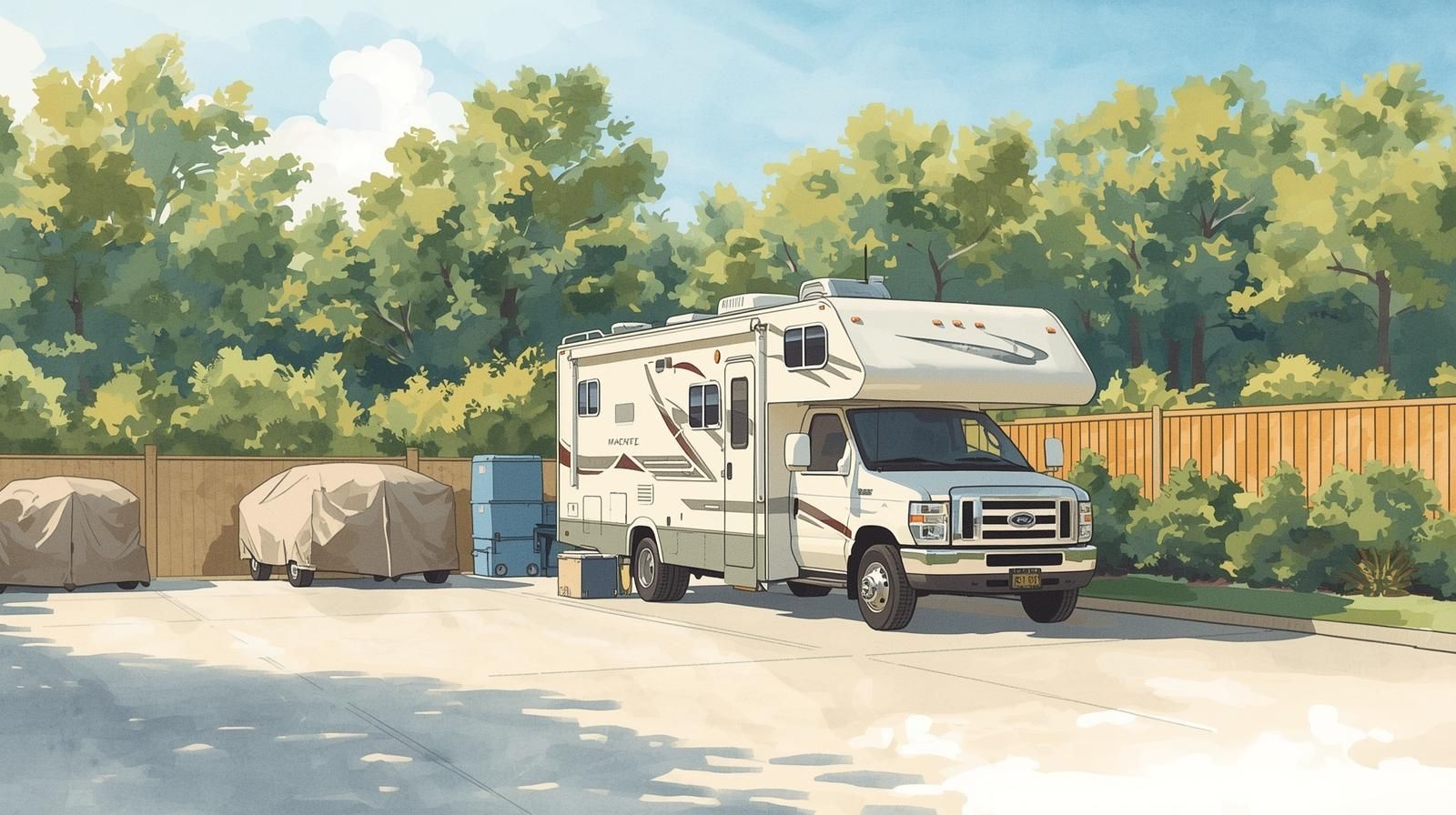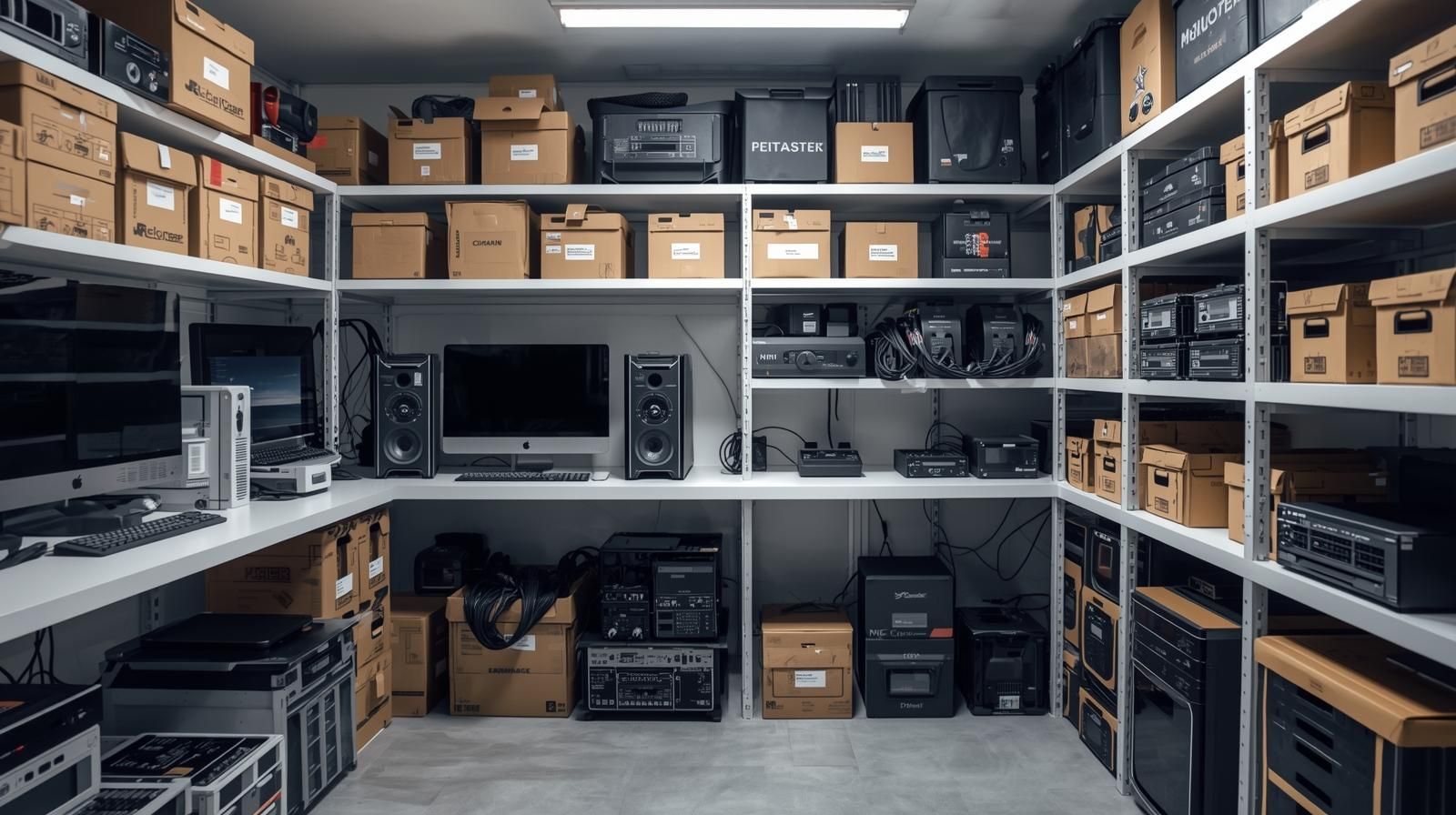Tips for Storing an RV
If you’re an RV owner, you know that finding the right place to store your home on wheels is just as important as planning your next trip. Whether you take your RV out every weekend or only a few times a year, proper RV storage is key to protecting your investment and making sure it’s always ready for adventure. Before you park your RV for the season, consider these practical storage tips to ensure your vehicle stays in peak condition.
Preparing Your RV for Storage
A thorough cleaning should be the first step before storage. Start by removing all food, trash, and personal items to prevent mold, odors, and pests. Wipe down all surfaces, clean the fridge and freezer (and leave the doors ajar), and vacuum the floors. Be sure to empty and sanitize the holding tanks. Cleaning now not only prevents damage but gives you a fresh start the next time you hit the road.
Think of it as hitting a reset button—your future self will thank you for a spotless and organized interior.
Exterior Protection
Your RV’s exterior takes a beating from sun, rain, and road grime. Before storing it, wash and wax the entire vehicle. This helps preserve the paint and protect the surface from UV rays, dirt buildup, and environmental wear. Be thorough, clean the roof, awnings, and undercarriage too.
Inspect for cracks, holes, or any signs of leaks. Reseal windows, doors, and roof seams as needed. It’s much easier (and cheaper) to address minor issues before they turn into major problems during the off-season.
Tire Care and Maintenance
Your tires support a lot of weight, and prolonged storage without movement can lead to flat spots or cracking. Inflate them to the manufacturer’s recommended PSI, and consider placing the RV on leveling blocks or tire cradles. If possible, move the RV slightly every few weeks to shift the weight and reduce wear.
Using tire covers is a smart move to protect against UV damage. If storing for an extended period, you may even want to remove the tires and store them in a cool, dry place.
Moisture and Pest Control
Moisture buildup can cause mildew, mold, and structural damage. Use moisture absorbers or dehumidifiers to keep the air dry inside the RV. Open cabinet doors and closets to promote airflow.
Pests are another storage challenge. Inspect and seal any openings where rodents or insects might enter. This includes vents, slide-outs, and plumbing penetrations. You can place traps or use natural deterrents like peppermint oil-soaked cotton balls to keep critters away.
Battery and Power System Protection
Batteries can discharge over time, especially in cold weather. Disconnect all batteries or use a trickle charger to maintain charge levels. This applies to both the house and chassis batteries.
Also, turn off the main breaker and unplug appliances. If your RV is stored in a facility with power access, consider a battery maintainer to ensure the system stays healthy and ready to go.
Plumbing and Water System Prep
If you're storing your RV during winter or in freezing temperatures, winterizing your water system is essential. Drain all water lines, tanks, and the water heater. Then, flush the system with RV antifreeze as recommended by the manufacturer.
For non-winter storage, ensure that all water is drained and pipes are dry. Close all faucets and plug sink and shower drains to keep pests and odors from entering the cabin.
Security Measures and Facility Considerations
Where and how you store your RV can make a big difference in long-term protection. If storing at home, make sure the area is level, secure, and out of direct sunlight. Use a hitch lock and install motion-activated lights or a security camera if possible.
For even greater peace of mind, consider RV storage options at a dedicated facility. Look for features such as gated access, 24/7 surveillance, lighting, and on-site management. Indoor or covered storage offers protection from the elements, while outdoor lots may offer more affordability.
Covering Your RV
A quality RV cover adds a vital layer of protection. Look for one that’s breathable, UV-resistant, and tailored to your RV’s dimensions. Avoid tarps or cheap covers that can trap moisture and scratch the paint.
Covers protect your RV from dust, bird droppings, tree sap, and weather exposure. Don’t forget to cover roof vents, air conditioners, and tires separately if needed.
Seasonal Storage Tips
Each season presents its own set of storage challenges. Here’s what to keep in mind throughout the year:
- Winter: Drain all water systems, use antifreeze, and disconnect batteries. Snow and ice can be heavy, so check the roof periodically.
- Spring: Look out for mold or pests that may have settled in. This is a great time to schedule maintenance and plan for the upcoming travel season.
- Summer: High temperatures can cause tire blowouts and battery drain. Ensure your storage location provides shade or ventilation if possible.
- Fall: Clear leaves and debris from the roof and around seals. Check caulking and seals to prepare for winter.
Insurance and Registration Considerations
Don’t cancel your insurance just because your RV isn’t in use. Comprehensive insurance typically covers theft, vandalism, and weather-related damage—even in storage. Contact your provider to ask about storage-specific policies or discounts for long-term coverage.
Keep your registration and tags current. Some states or municipalities may fine you for unregistered vehicles, even if they're not in use.
Additional Tips for Storing an RV
Here are a few more tips to keep your RV in excellent shape during storage:
- Maintenance Log: Keep a checklist or journal to track your prep steps and any repairs.
- Fuel Stabilizer: Add it to the gas tank to prevent fuel breakdown and keep your engine running smoothly.
- Roof Checkups: Periodically inspect for ponding water, tears, or cracks—especially before and after storms.
- Ventilation: Crack a window or use vent covers to allow for air exchange without letting in rain or pests.
- Check on it: Visit your RV regularly to check for leaks, rodent activity, or low tire pressure. A quick monthly check can prevent major problems later.
Tips for Re-Entry After Storage
When it’s time to hit the road again, give your RV a detailed once-over:
- Reconnect the battery and test all electrical systems.
- Flush the water system and sanitize the tanks.
- Check fluid levels, especially brake and transmission fluids.
- Inspect seals, tires, and undercarriage for damage or leaks.
- Wash and vacuum the interior to freshen up your space.
Choosing the Right Storage Facility
Not all storage facilities are created equal. Before you commit, compare your options and look for locations that offer:
- Covered or climate-controlled units
- Flexible rental terms
- Excellent reviews and responsive management
- Easy access for large vehicles
- Amenities like dump stations or wash bays
Use resources like SpareFoot or local listings to find RV storage near you.
Conclusion
Storing your RV properly is the best way to protect your home on wheels and ensure it's ready to go when adventure calls. With just a little prep and ongoing care, you’ll extend the life of your RV, avoid costly repairs, and enjoy more time on the road.
Whether you're parking it for the winter or between weekend getaways, use these storage tips to make sure your RV stays safe, clean, and road-ready. And don’t forget to explore RV storage options that fit your needs and budget, because peace of mind is priceless when it comes to your home away from home.










